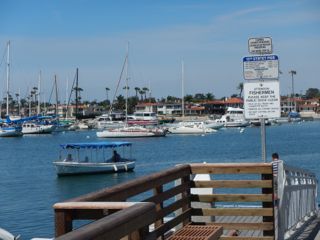
-
| 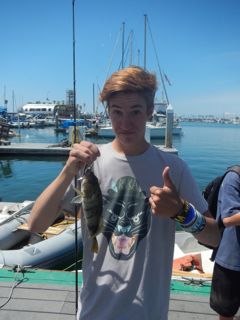
-
| 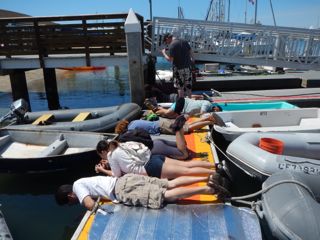
-
|
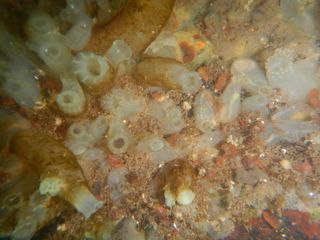
Ciona intestinalis and Ascidia ceratodes.
This and the following identifications of tunicates were kindly provided by Gretchen Lambert, who says "always happy to help people learn about squirts!"
| 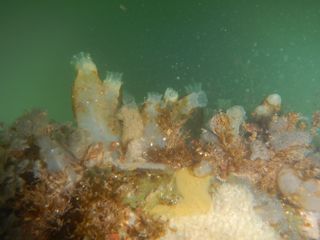
Ciona intestinalis (probably)
| 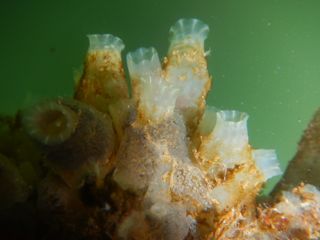
Ciona intestinalis (probably)
|
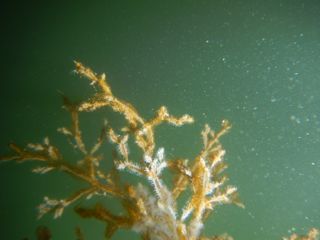
-
| 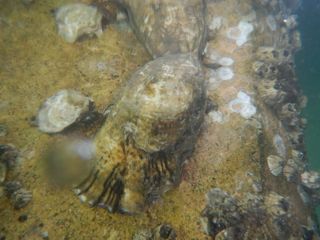
-
| 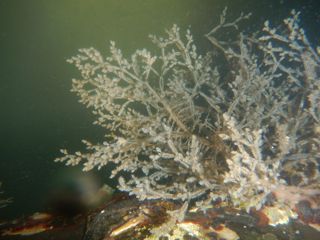
-
|
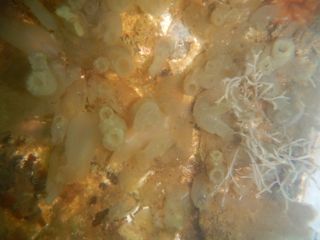
Ciona savignyi
| 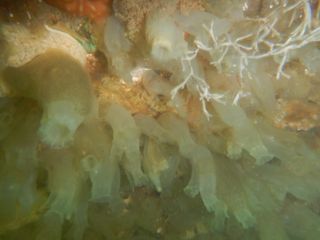
Ciona savignyi
| 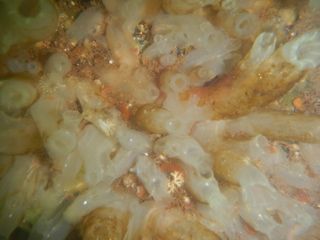
Ciona savignyi and Ascidia sp., plus C. intestinalis
|
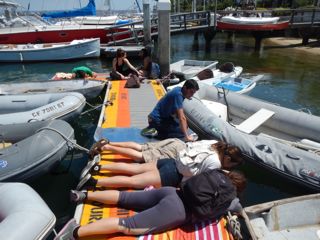
-
| 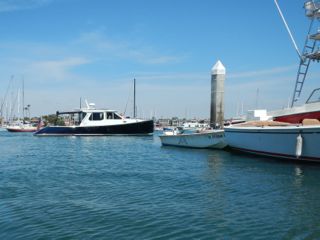
-
| 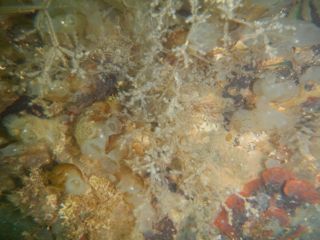
Ciona savignyi (solitary tunicate) probably + Diplosoma listerianum (social tunicate)
|
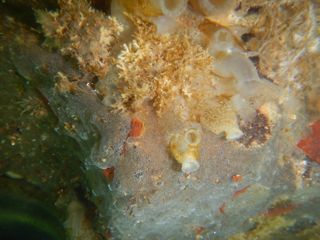
Ciona savignyi (solitary tunicate) probably + Diplosoma listerianum (social tunicate)
| 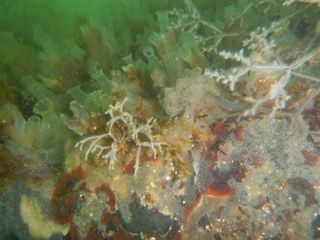
Ciona savignyi (solitary tunicate) probably + Diplosoma listerianum (social tunicate)
| 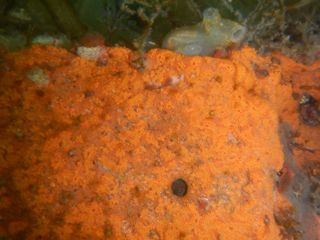
Botrylloides violaceus
|
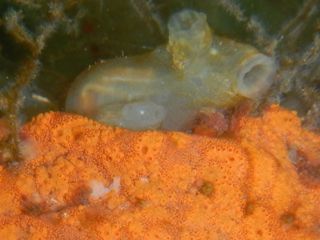
Ciona sp., a solitary tunicate, above the orange social tunicate, Botrylloides violaceus
| 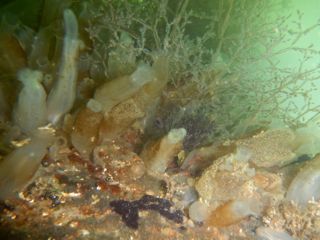
Ciona cf intestinalis
| 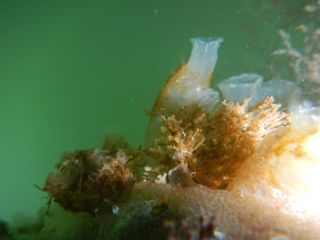
Ciona cf intestinalis
|
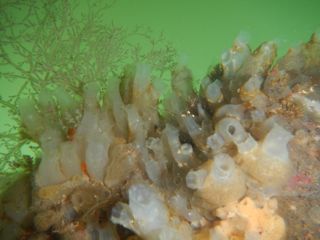
Ciona savignyi
| 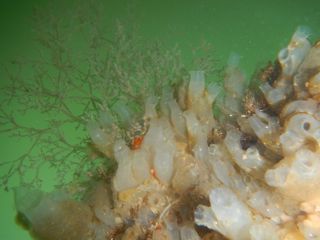
Ciona savignyi
| 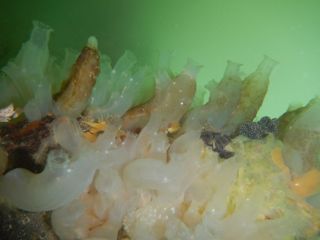
Ciona intestinalis with red spot at end of sperm duct.
|
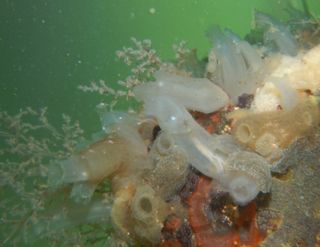
Ciona intestinalis with Diplosoma listerianum
| 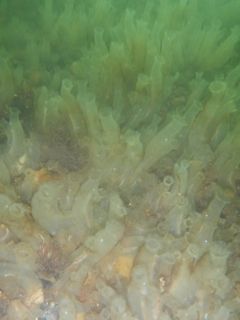
Ciona savignyi
| 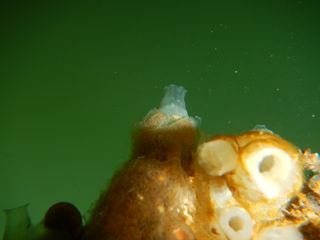
Ciona cf. intestinalis
|
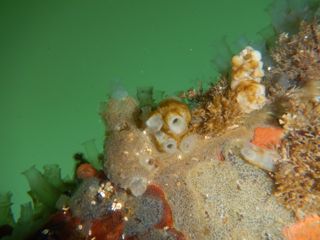
Ciona intestinalis, Styela plicata and Diplosoma listerianum
| 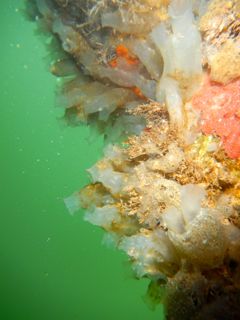
Ciona sp.
| 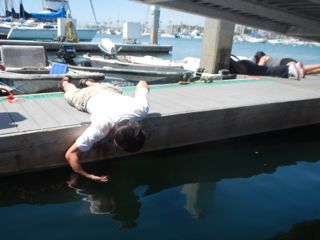
-
|
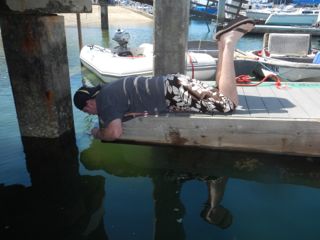
-
| 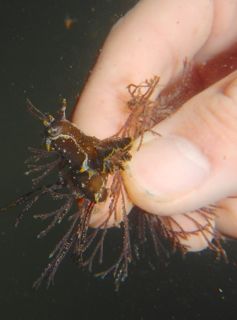
Polycera hedgpethi is a widely distributed nudibranch
that is associated with the Bryozoan genus, Bugula, in California.
| 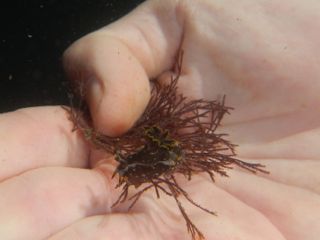
-
|
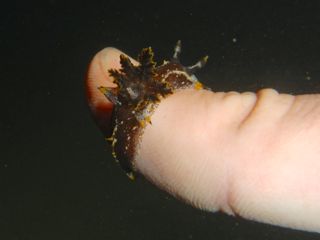
-
| 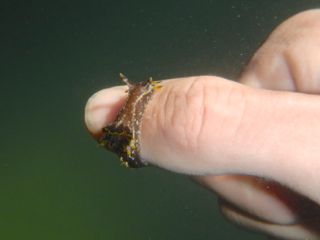
-
| 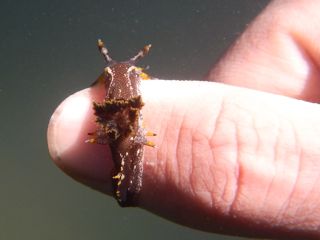
-
|
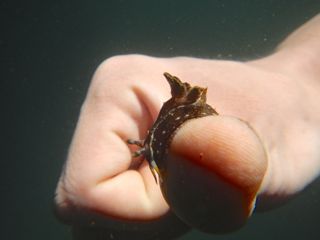
-
| 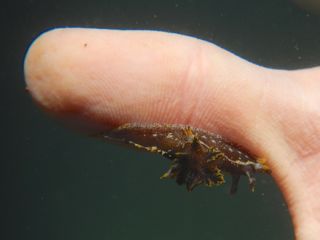
-
| 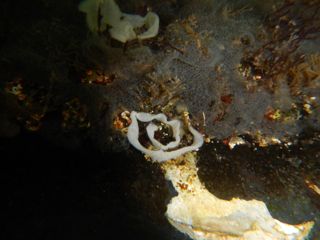
The Polycera hedgpethi was collected near this nudibranch egg mass.
|
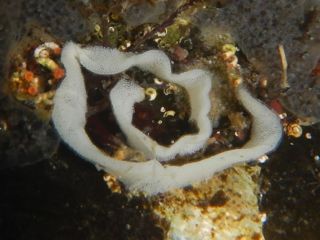
The Polycera hedgpethi was collected near this nudibranch egg mass
(cropped for close-up).
| 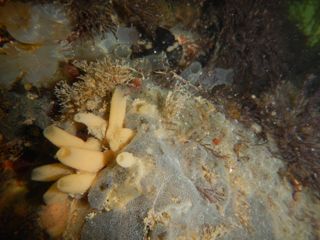
Calcareous sponge, perhaps Leucilla sp? Also, Diplosoma listerianum and Ciona sp.
| 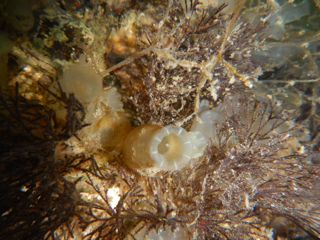
Ciona savignyi
|
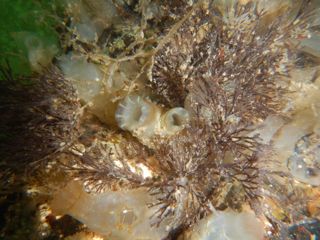
Ciona savignyi--note orange spots on body wall on bottom animal and, also,
there is no red spot at end of sperm duct as in C. intestinalis.
| 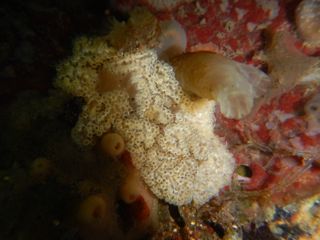
Ciona sp. with white colonial tunicate that could be Aplidium sp.
| 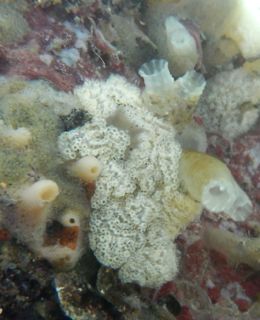
Ciona sp. + Diplosoma listerianum on left + white colonial tunicate that could be Aplidium sp.
|
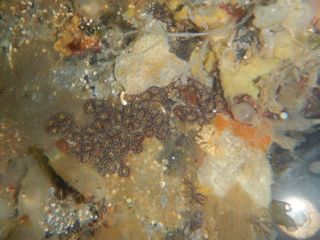
The dark colonial tunicate is Botryllus schlosseri. Ciona sp. is on left.
| 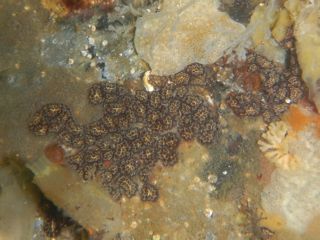
The dark colonial tunicate is Botryllus schlosseri. Ciona sp. is on left.
| 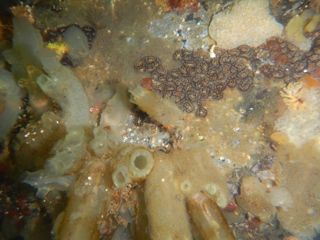
Ciona sp.. with Botryllus schlosseri
|
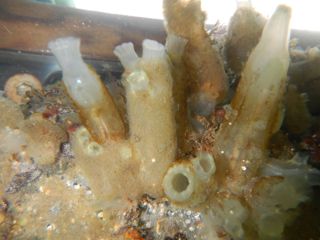
Ciona sp..
| 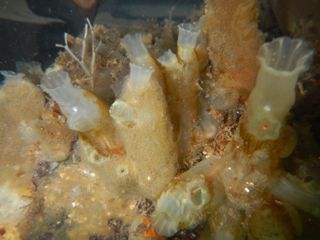
Ciona intestinalis-note red spot!
| 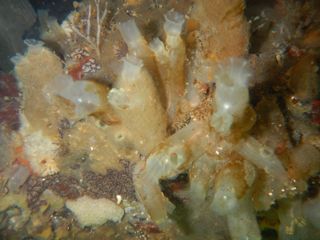
Ciona intestinalis-note red spot!
|
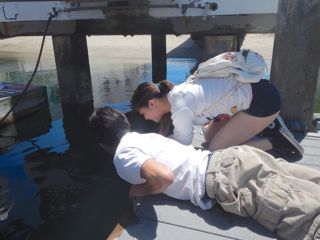
-
| 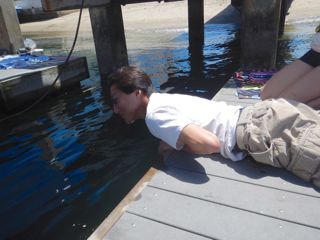
-
| 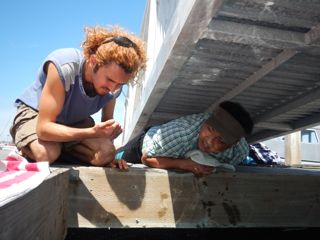
-
|
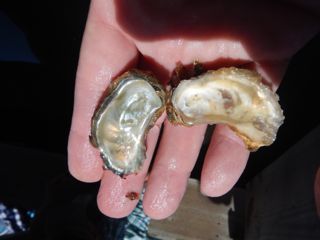
Our native Olympia oyster, Ostrea lurida
| 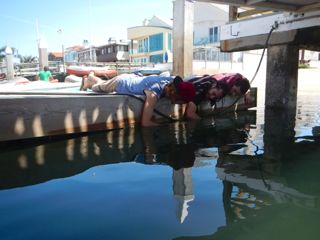
-
| 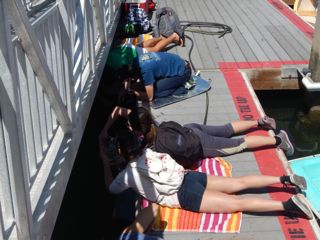
-
|
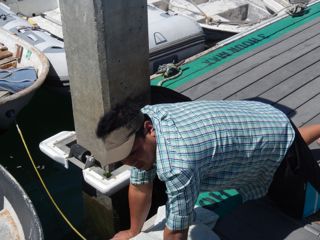
-
| 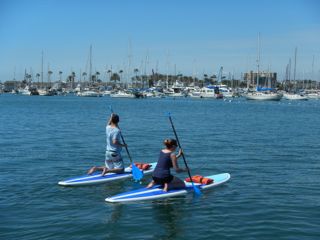
-
| 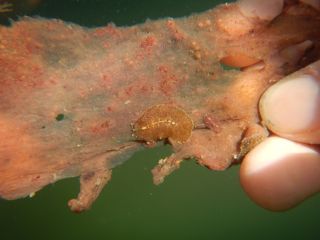
Flatworms on disintegrated Botrylloides violaceus. The flatworms were identified as Cycloporus sp.
by Sigmer Quiroga and Leslie Newman on the Marine Flatworm facebook page, but later re-identified as more likely to be Eurylepta sp. (probably E. aurantiaca)
by Tony Phillips. E. aurantiaca was figured (PL 4.11) by Haderlie (1980) in his flatworm chapter in Intertidal Invertebrates of California.
|
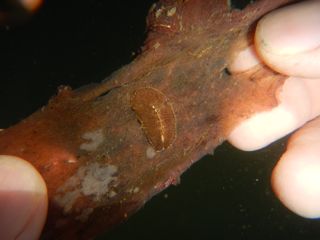
-
| 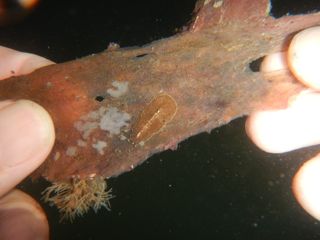
Flatworms (Eurylepta sp.) on disintegrated Botrylloides violaceus. Identifications:
Gretchen Lambert for tunicate; Tony Phillips for flatworms.
| 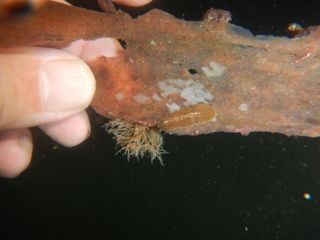
-
|
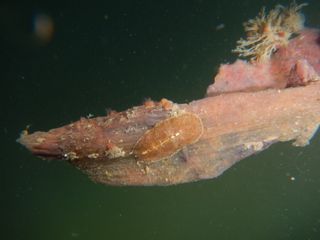
-
| 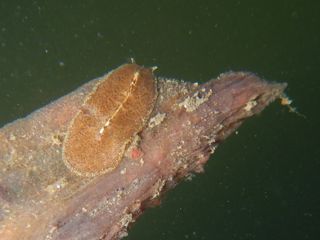
Flatworms (Eurylepta sp.) on disintegrated Botrylloides violaceus. Identifications:
Gretchen Lambert for tunicate; Tony Phillips for flatworms.
| 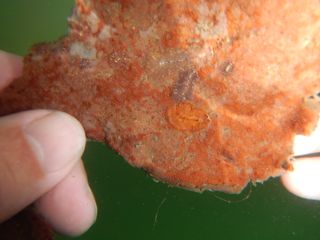
-
|
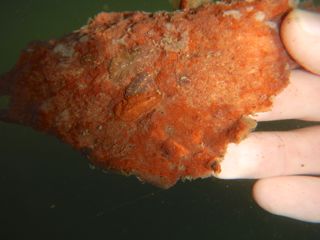
-
| 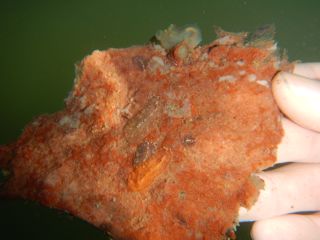
Flatworms (Eurylepta sp.) on disintegrated Botrylloides violaceus. Identifications:
Gretchen Lambert for tunicate; Tony Phillips for flatworms.
| 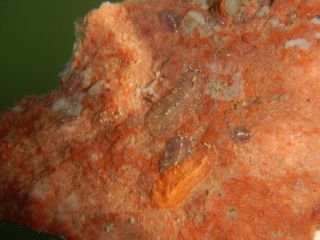
-
|
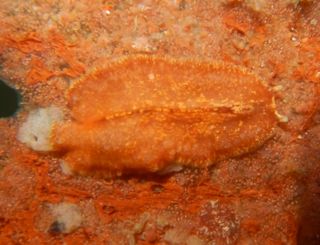
An especially cryptic flatworm (Eurylepta sp.) on disintegrated Botrylloides violaceus.
Identifications: Gretchen Lambert for tunicate; Tony Phillips for flatworm.
| 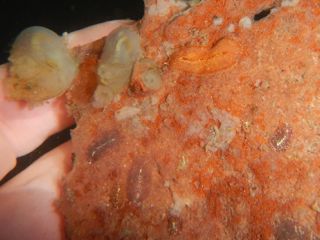
-
| 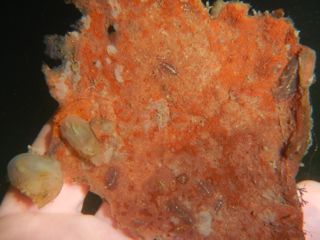
-
|
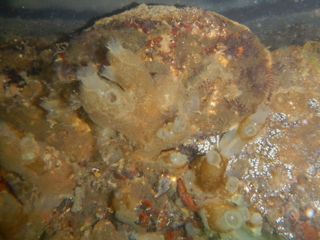
Ciona intestinalis with red spot, covered with Diplosoma listerianum.
| 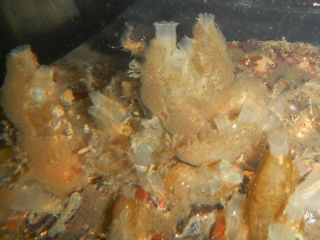
Ciona sp.. and Diplosoma listerianum.
| 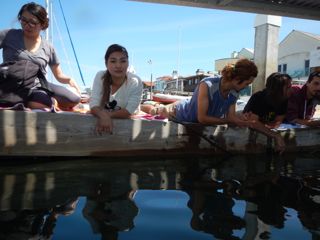
-
|
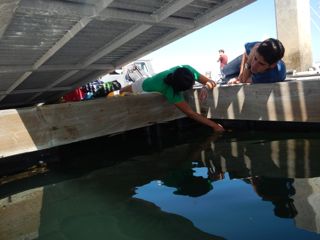
-
| 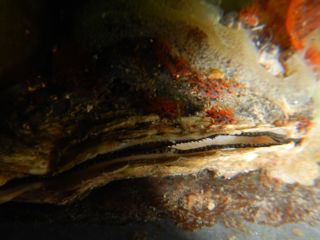
An unidentified bivalve, slightly gaped
| 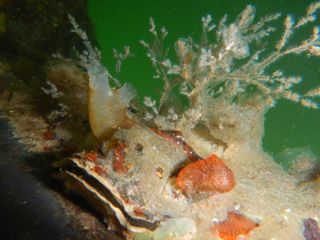
Ciona sp. + Diplosoma listerianum
|
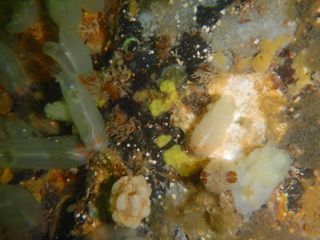
Ciona intestinalis with red spot. Styela plicata at bottom
| 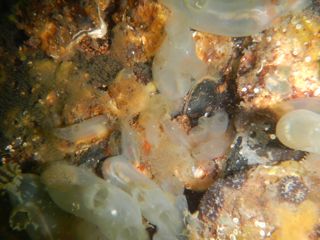
Ciona with (black) Botryllus schlosseri at bottom
| 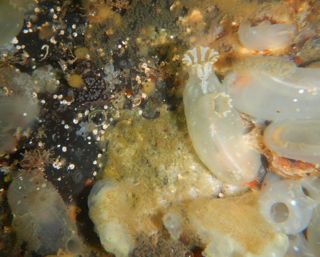
Ciona savignyi-typical mottling
|
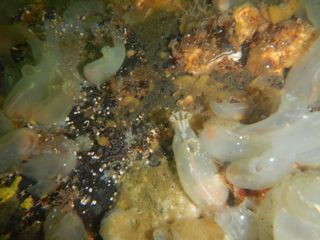
Ciona savignyi, black Botryllus schlosseri and C. intestinalis with red spot on right
| 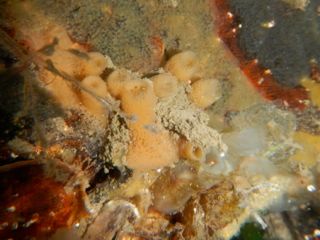
Calcareous sponge, Ciona intestinalis with red spot, plus Diplosoma listerianum above the sponge
| 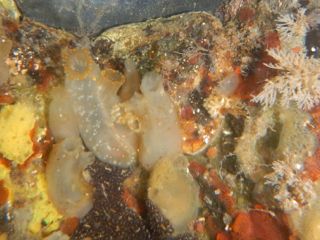
Ciona savignyi, black B. schlosseri on right. C. intestinalis with red spot on right
|
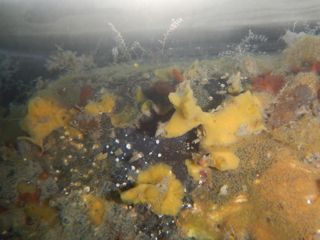
-
| 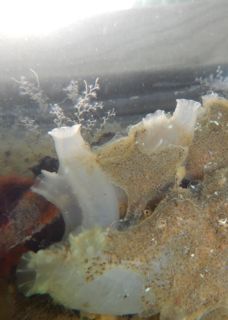
Ciona sp. with Diplosoma listerianum
| 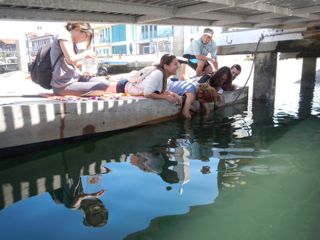
-
|
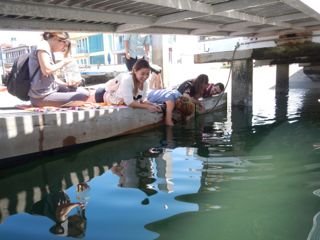
-
| 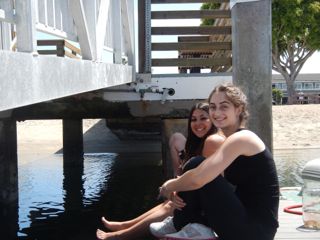
-
| 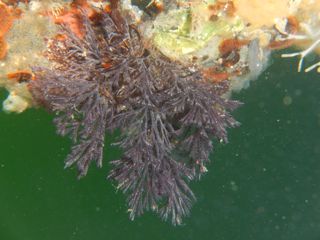
-
|
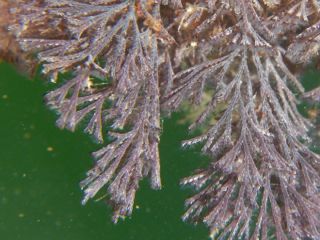
-
| 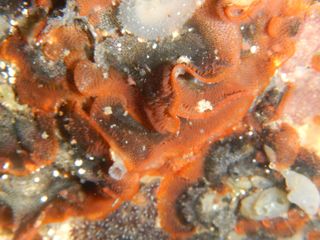
Ascidia zara at top
| 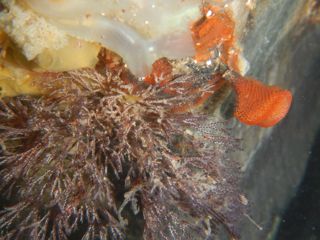
Bryozoans, Bugula sp. on lower left, unidentified on right
|
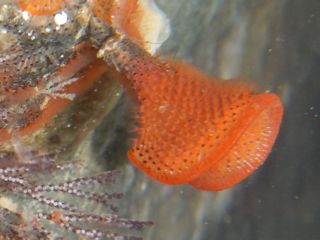
| 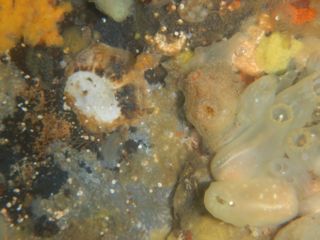
Ciona savignyi
| 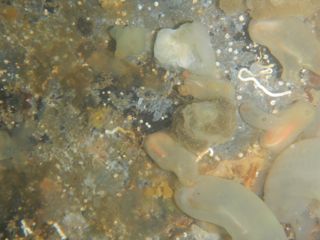
Ciona savignyi
|
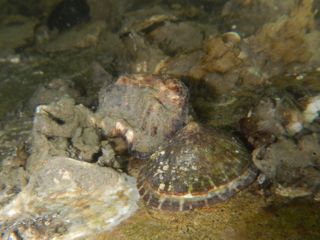
-
| 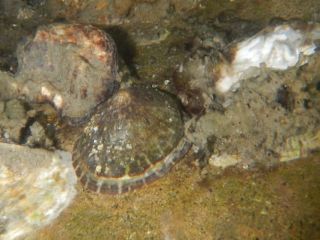
-
| 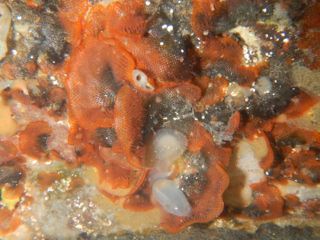
Ascidia zara in middle; note tunic papillae
|
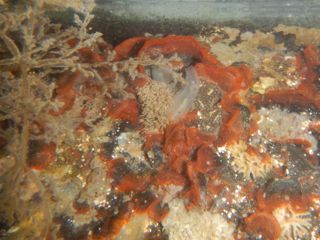
The widely invasive bryozoan, Watersipora subtorquata, which fouls boats
and docks and is more tolerant of copper paint (e.g., anti-fouling paint) than most organisms. See here for more info:
http://www.exoticsguide.org/watersipora_subtorquata.
| 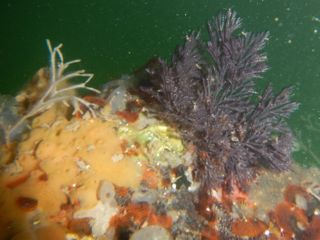
-
| 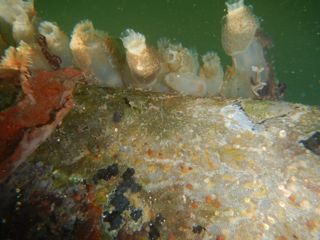
Ciona sp. with Diplosoma listerianum and bryozoans
|
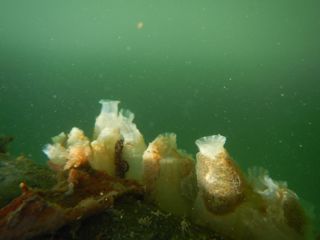
Ciona sp. with Diplosoma listerianum and bryozoans
| 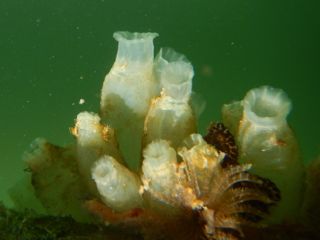
Ciona sp. with Diplosoma listerianum and bryozoans. I am not sure about the tentacles on the lower right.
| 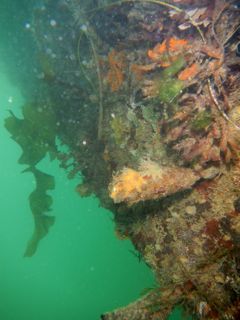
The M St. Dock had a different solitary tunicate, Styela clava, in middle and at bottom.
|
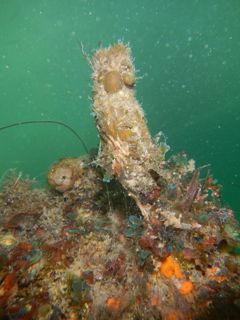
Styela clava (looks like Bart Simpson)
| 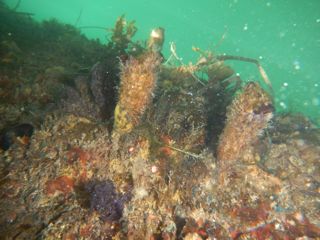
Styela clava
| 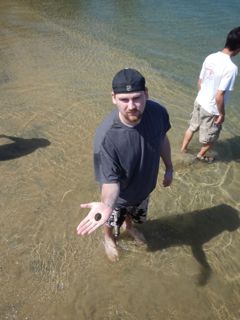
-
|
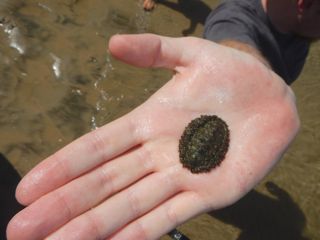
-
| 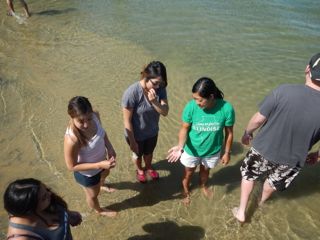
-
| 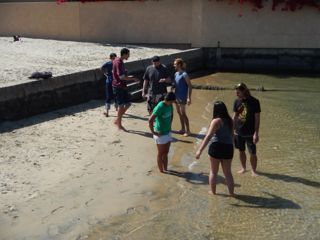
-
|
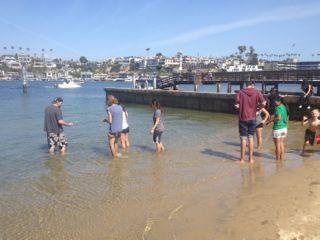
-
| 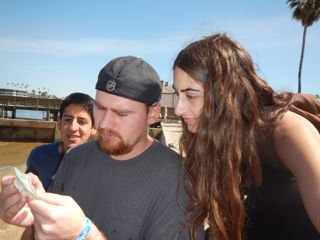
-
| 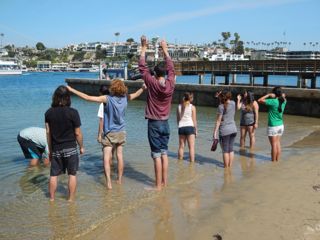
-
|
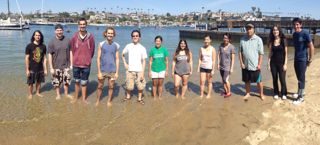
-
| 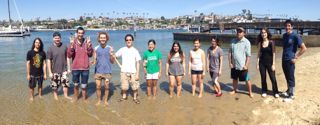
-
| 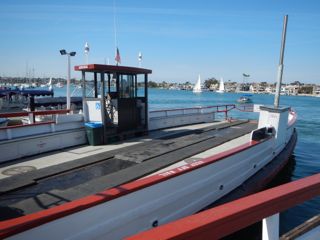
-
|
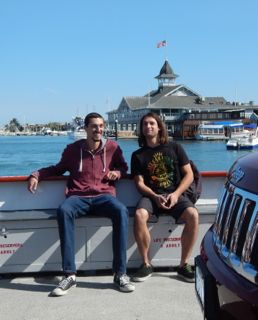
-
| 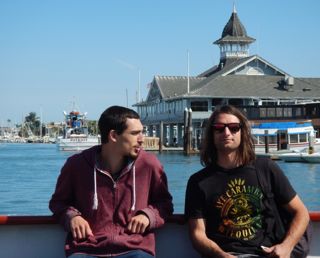
-
| 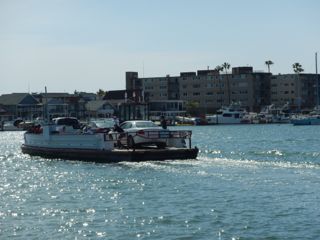
-
|
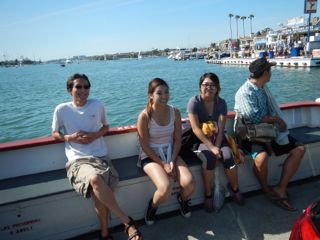
-
| 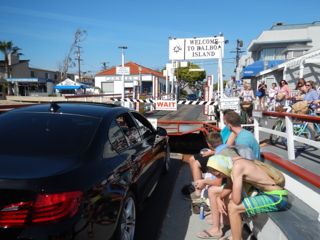
-
| 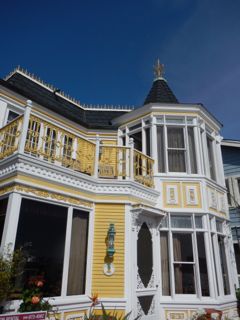
-
|
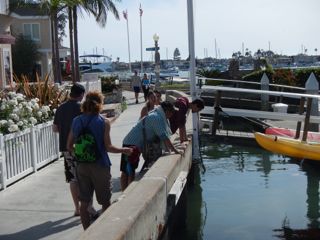
-
| 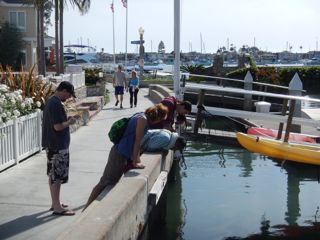
-
| 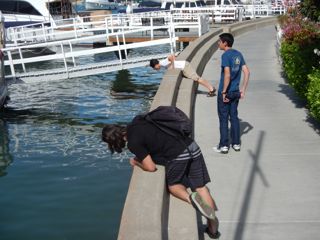
-
|
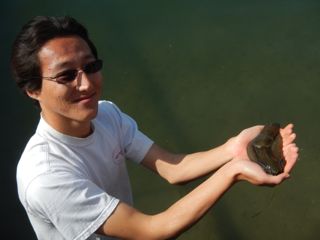
-
| 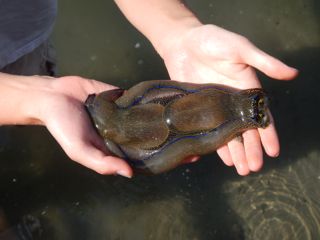
-
| 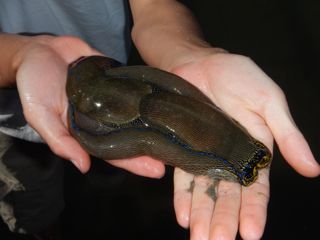
-
|
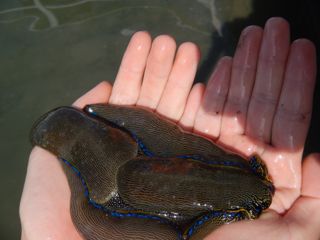
-
| 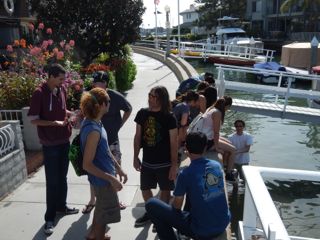
-
| 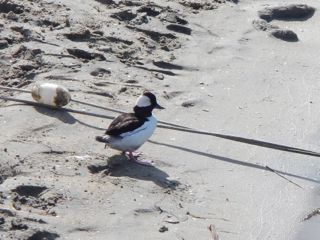
-
|
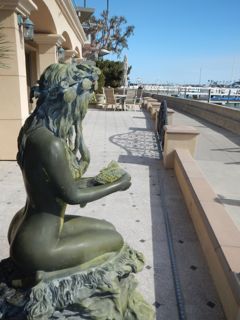
-
| 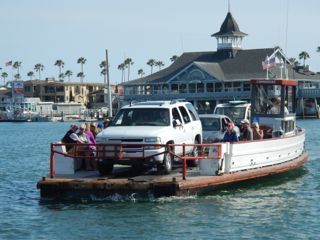
-
| 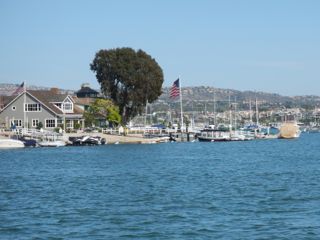
-
|
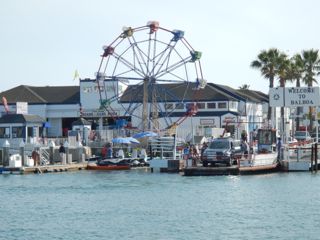
-
| 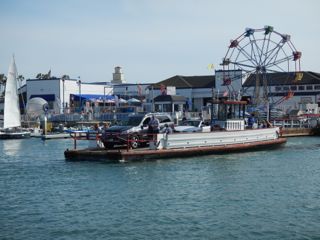
-
| 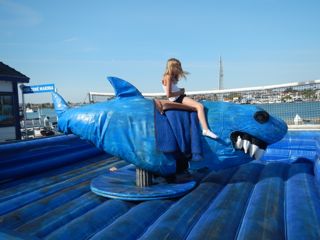
-
|
 Under Construction!
Under Construction! Under Construction!
Under Construction!